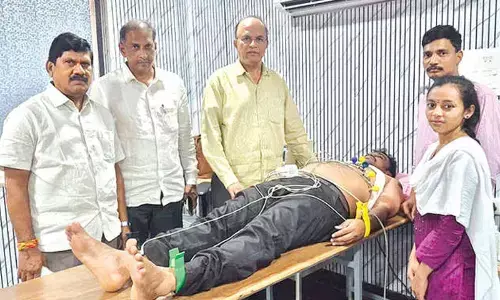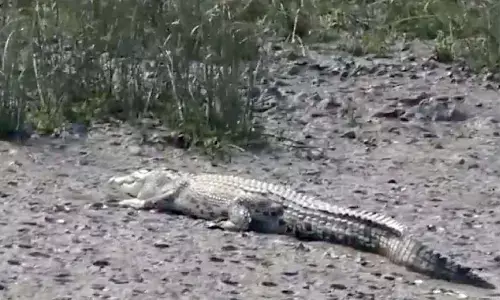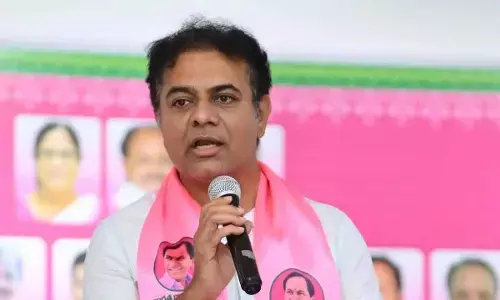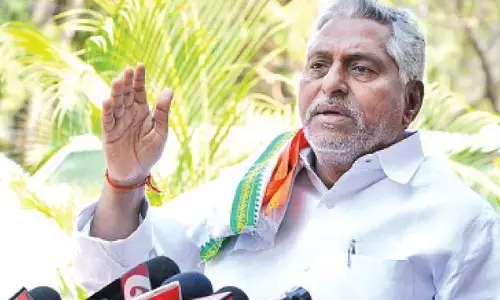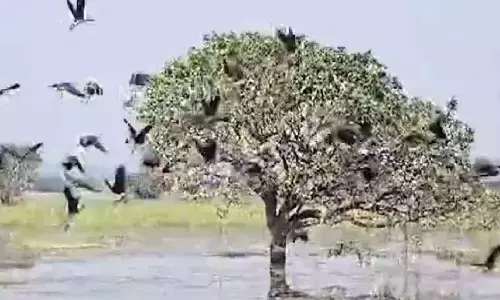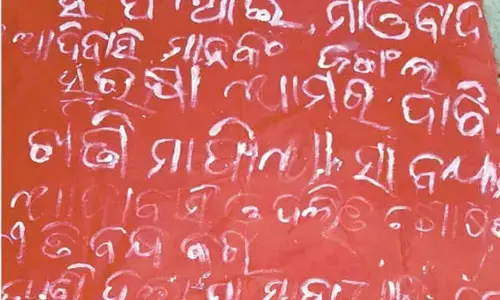Distorting age-old custom & traditions in Bhadrachalam
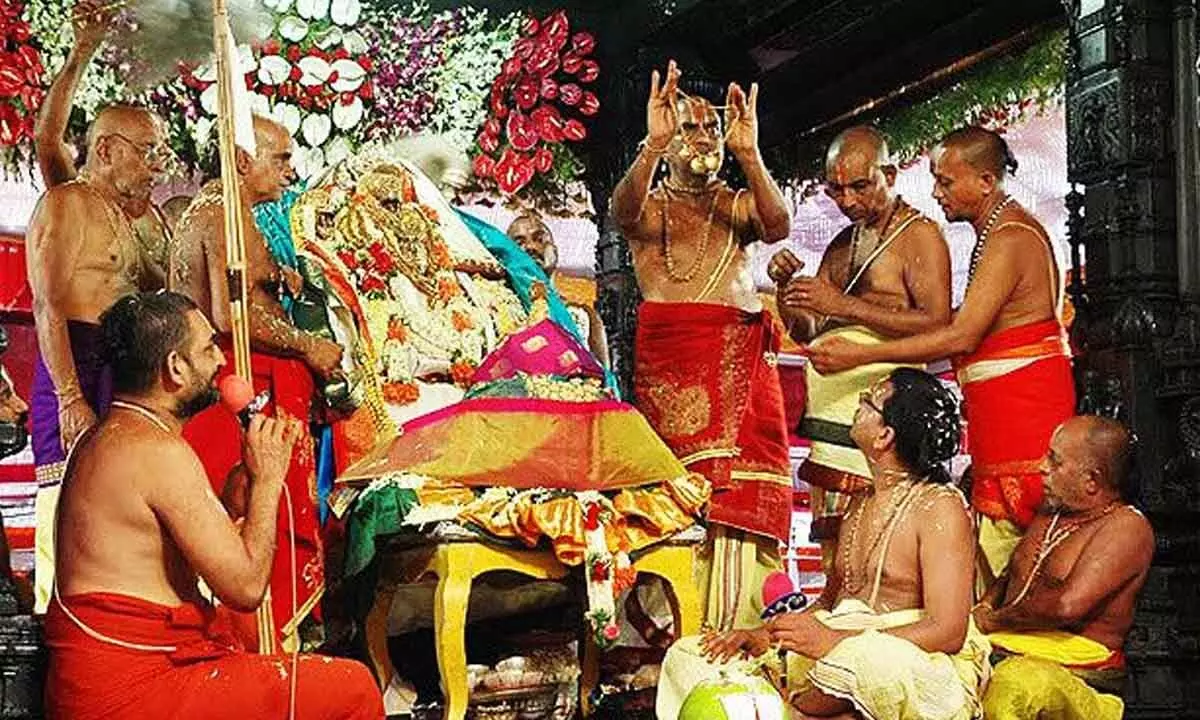
Replacing Sri Rama with Ramanarayana is quite unconventional
Under the grand auspices of Bhadrachalam Sri Sitarama Swamy temple authorities, fully supported by the Telangana State government, and on the specially decorated Kalyana Mandapam, the annual majestic ritual of Sri Sitarama Kalyanam, or the divine marriage of Rama and Sita, to the Proxy Icons (Utsav Vigrahas) of the 'Vamanka Sthitha Janaki, Sri Rama along with Lakshmana – the way they give darshan to devotees in Bhadrachalam temple sanctum sanctorum – was performed on March 30, 2023 coinciding with the auspicious Srirama Navami. Bhadrachalam has a special and unique place among all the Sri Rama temples in the country. It is referred to as 'Southern Ayodhya.'
Devotees in large numbers from across the country attended as usual this year, too. However, this year also, misleading the large number of devotees and to their utter displeasure, as well as in the presence of dignitaries, who included top government officials, non-officials and 'His Holiness' China Jeeyar Swamy (witnessing the whole proceedings), as has been done in the recent past few years, the learned priests performing Kalyanam, distorting the age-old customs and traditions, replaced Sri Rama by Ramanarayana. Devotees who came to witness Sita Rama Kalyanam, but not Ramanarayana Kalyanam, were taken aback, when the learned priests, from one side referring to the Bride and Groom as Sita and Rama, in between, from the other side, referred them as Laxmi and Ramanarayana in their place and recited their ancestral lineage (Pravara and Gotra) but not that of Sri Rama (Aja, Raghu, Dasharatha and Vasishta Gotra) and Sita Devi (Nimi, Videha, Janaka and Gautama Gotra) and also transformed them to Brahmins from Kshatriyas.
According to Valmiki Ramayana, the most authentic of all Ramayanas, prior to Sita Kalyanam, the Royal Priest Vasishta narrated Ikshvaku (Surya Kings) Lineage starting from Marichi birth to Lord Brahma to Abhaga, Aja, Dasharatha and Rama. Similarly, Janaka's Royal Priest Shatananda narrated bride's lineage starting from emperor Nimi to Videha and Janaka. Then Janaka led forth fully decorated Sita with a variety of bridal jewelry and positioning her face-to-face Rama, he addressed Rama like this: 'Oh! Son of Kausalya! This is Sita, my daughter. She shares your duties for life. She acquits herself in whatever duty you undertake. Take her in marriage and take her from her father. Everything good and bliss will happen to you. Hold her palm with your palm. Rama! Sita is extraordinary and earmarked for you. Sita is the symbol of moral truth and morality tolerant womanhood. She is prosperous and husband-devout and will be always with you as your own shadow." So, saying Janaka poured holy water into the palms of Rama amid chanting of hymns. This valuable part is never referred to by the priests.
In Bhadrachalam Sita Rama Kalyanam, as soon as the Proxy Icons (Utsav Vigrahas) reached the Kalyana Mandapam, the priests categorically mentioned initially that they are of 'Sita Ramachandra Kalyana Icons.' When the 'Sankalpam' was recited, the priests mentioned them as 'Bhadrachalam Sri Ramachandra adorned with Sita and Lakshmana' and went on repeating Sita and Rama many times very clearly. The same thing they did while performing 'Punyahavachana' (sprinkling of holy water on the surroundings). At this stage mysteriously and ridiculously, 'Ragam-Tanam-Pallavi' of learned priests changed, indicating their intention and strange trends. Commencing 'Kanyavaranam', an important part of the divine Kalyanam ritual, Lord Sri Ramachandramurthy and Sita Devi who were at the centerstage suddenly vanished and in their place learned priests brought 'Ramanarayana' and 'Sita Mahalakshmi' along with reciting these two ancestral lineage (Pravara and Gotra), but not of Rama and Sita.
The learned priests recited the Gotra of bridegroom as 'Achyuta,' and the lineage was referred to great grandson of 'Parabrahma Sharma,' the grandson of 'Vyooha Narayana Sharma' and son of 'Vibhava Vasudeva' and concluded as 'Sri Ramanarayana Varaya.' Similarly, the Pravara and Gotra of Sitadevi too was changed. Reciting the Gotra of bride as 'Soubhagya,' the Lineage was recited to her as great granddaughter of 'Vishvambhara Sharma,' granddaughter of 'Ratnakara Sharma' and daughter of 'Ksheerarna Sharma' and concluded by reciting 'Sri Sita Mahalakshmi Namnee.' By bestowing 'Achyuta' and 'Soubhagya' Gotras respectively, the bridegroom and bride were changed from kshatriyas to brahmins, distorting the age-old customs and traditions followed since Bhakta Ramadas times.
Compounding the confusion, in the subsequent stages of divine marriage, namely, Yagnopaveeta Dharana, Vara Puja, Madhuparkam etc., the learned priests reverted to 'Sri Sita Lakshmana Sri Ramachandra Swamy.' But, at the time of reciting 'Maha Sankalpam,' though the priests mentioned them as Sri Ramachandra and Sita Devi, the Gotras were, however, recited as 'Achyuta and Soubhagya.' Why this dichotomy, cannot be understood. Again, at the time of sacred 'Mangalya Dharana,' Sita and Rama appeared! How and why? Ramanarayana appears and disappears on and off and under what authority is a mystery! Who is behind this mischief? Who is behind this impropriety? Why this distortion?
Visualising Bhadrachalam temple sans the eternal glory of Sri Rama and the grand Sri Sitarama Kalyanam is beyond imagination. For centuries, the shrine in Bhadrachalam is Ramalayam and in no way 'Ramanarayana' (Alayam) temple, as depicted by some poor intellectuals and scholars. Simply because the idol of the presiding deity in the shrine brought by Bhakta Ramadas is in the form of adorning conical wheels, bow with arrows and four arms, the irrational argument of few is that it is not that of Lord Sri Rama in the company of Sita and Lakshmana but of Ramanarayana. It is thoughtless and mischievous. It is an accepted reality that Lord Sri Rama, before and after his incarnation, was Sri Maha Vishnu and in between in the human form, he was Sri Rama in the company of Sitadevi and Lakshmana. The confusion created about the idol in Bhadrachalam temple sanctum sanctorum is of recent happening, mischievously orchestrated by some self-styled learned pundits. The majority, who belong to the school of thought, mainly the Sri Rama devotees, assert that it is Sri Rama who adorns the sanctum sanctorum, whereas the negligible but influential minority claim that it is Ramanarayana. These influential minority who includes the vociferous learned priests, during the annual ritual of Sri Sitarama Kalyanam, distorted the age-old traditional practice of reciting the ancestral lineage (Pravara and Gotra) as "Ramachandra Swamine Varaya" by replacing it with "Ramanarayana Swamine Varaya."
Devotees strongly believe that when Sri Rama, Sita and Lakshmana were in forests, one day Rama happened to sit on the rock of Bhadra who was in the form of a mountain then. The legend was that, in accordance with the wish of Bhadra, the Lord Sri Rama appeared to him adorning conical wheels, bow with arrows and four arms. Later, Lord Sri Rama blessed him to give Darshan to His devotees by transforming himself as an idol, right there on the mountain and accordingly stood there in the deity form of Sri Sita Rama Lakshmana.
Jagadguru Adi Shankaracharya after worshiping the idols, scripted the famous 'Vamanka Sthitha Janaki…." Shloka, in praise of the trio i.e., Sri Sita, Sri Rama and Lakshmana. This Shloka even after hundreds of years is recited today in the temple on a regular basis. Bhakta Ramadas built the temple to the idols he got from Dammakka which we see today. He in the numerous hymns that he wrote and composed as well as sang devotionally, addressing Sri Rama as 'Dasharathi' or 'Kodanda Rama' but never as 'Ramanarayana.' When he was kept in jail for alleged misappropriation of government funds to construct temple, in each of his hymns, he appealed to Sri Ramachandra to free him. There was no mention of Ramanarayana in any of the hymns.
All over the country, while performing Sitarama Kalyanam, the priests recite the ancestral lineage of Sri Rama as Aja, Raghu, Dasharatha belonging to Vasishta Gotra and that of Sitadevi as Nimi, Videha, Janaka forming part of Gautama Gotra. This was the custom in Bhadrachalam too until a couple of years ago. Of late, Sri Rama is being addressed as Ramanarayana with Achyut Gotra and Sitadevi addressed as Sita Mahalakshmi with Soubhagya Gotra. Thus, while calling it as Sri Sitarama Kalyanam they strangely perform the marriage of Lakshmi and Ramanarayana. Why? Why? Why?
Sri Rama having four arms is strictly in accordance with Pancharatra Agama Science. Adorning of conical wheels, bow with arrows and four arms by Sri Rama is also in accordance with Pancharatra Agama Science. It's, thus, undoubtedly Sri Rama who is by the side of Sita in the sanctum sanctorum (Vamanka Sthitha Janaki) of Bhadrachalam Temple. And hence, going to incontestable references to Sri Rama's form in scriptures, it is time to restore Sitarama Kalyanam in Bhadrachalam to its age-old glory and perform it without any distortion.
(The writer is CPRO to Chief Minister, Telangana)








